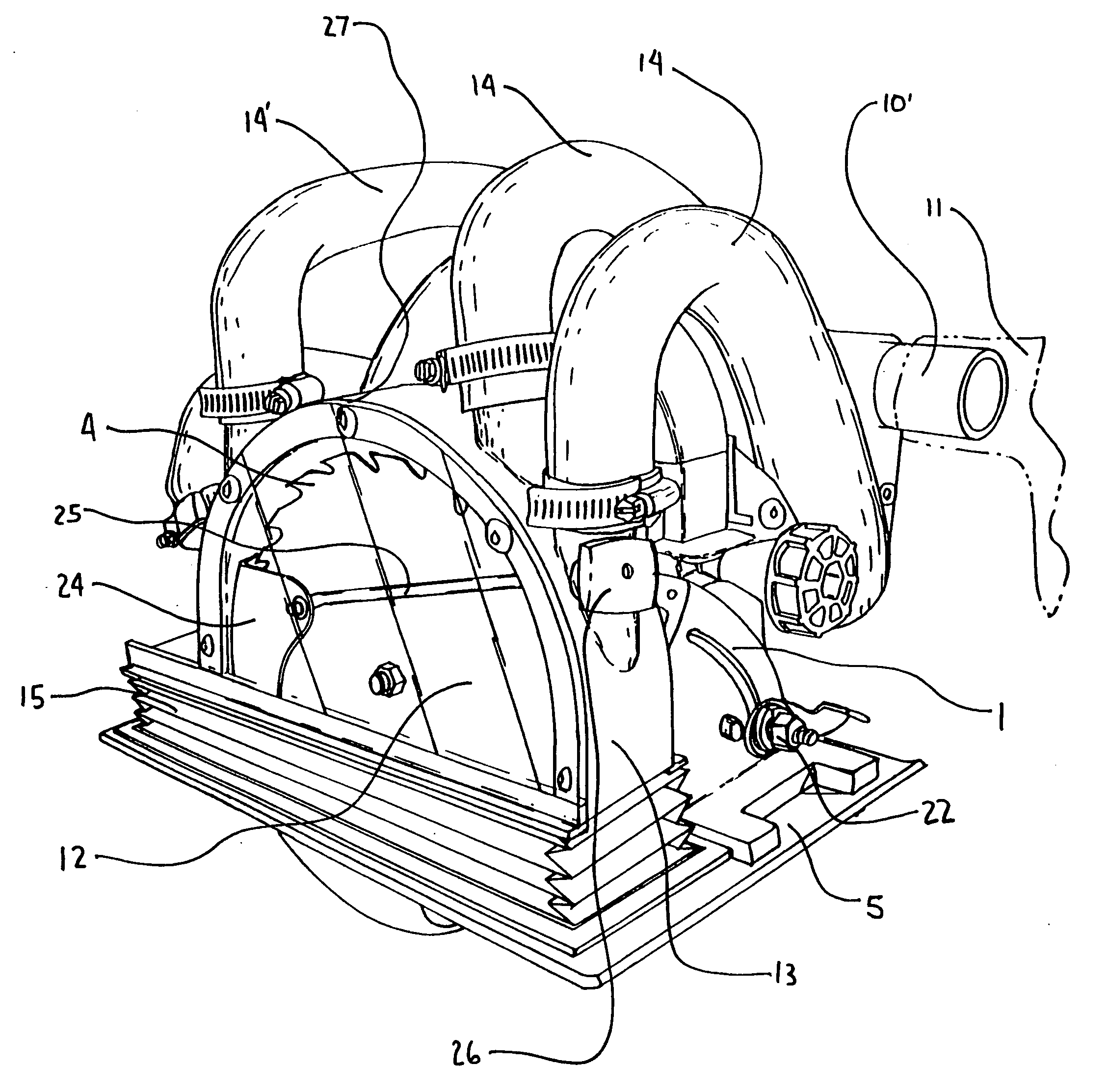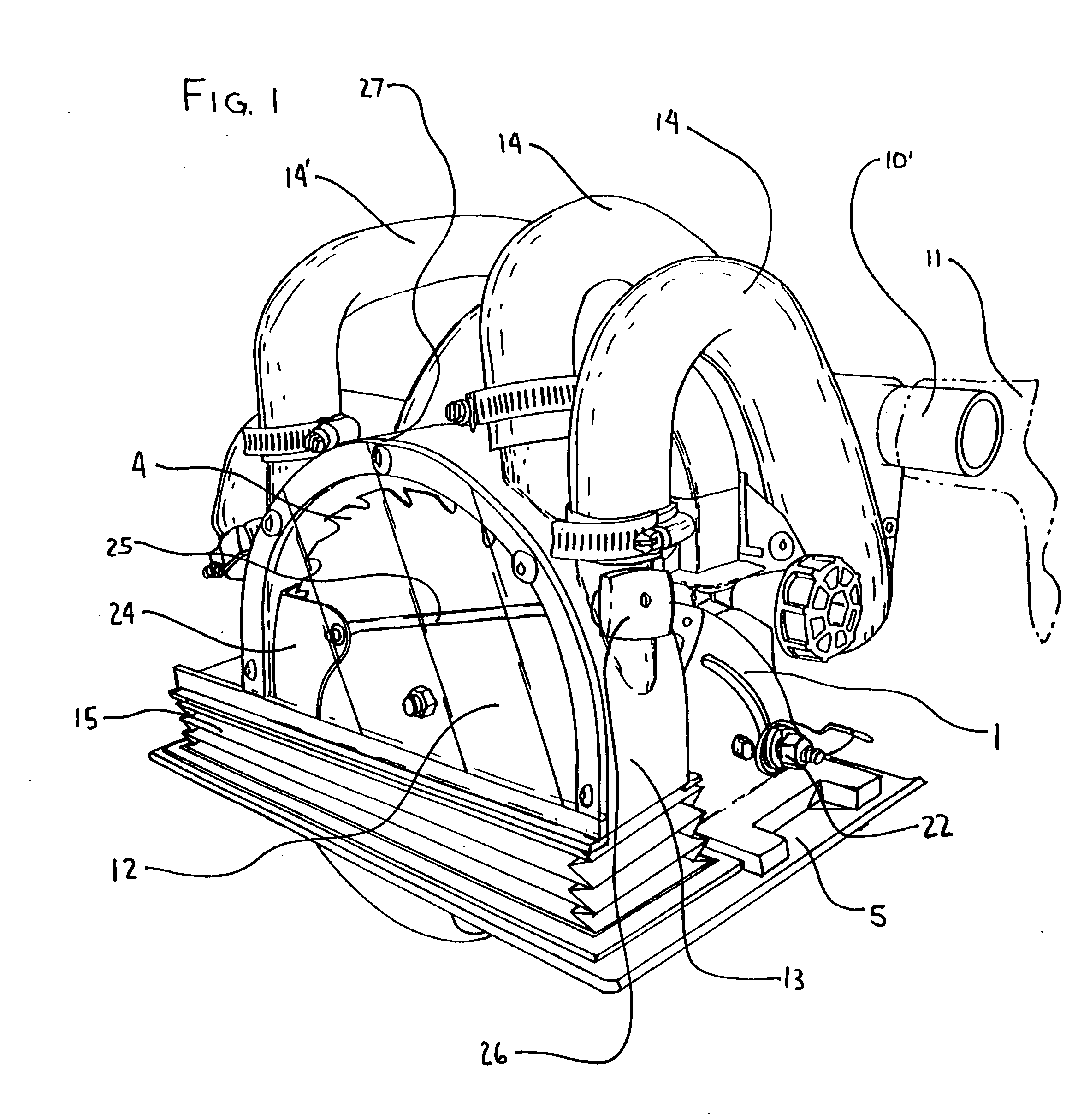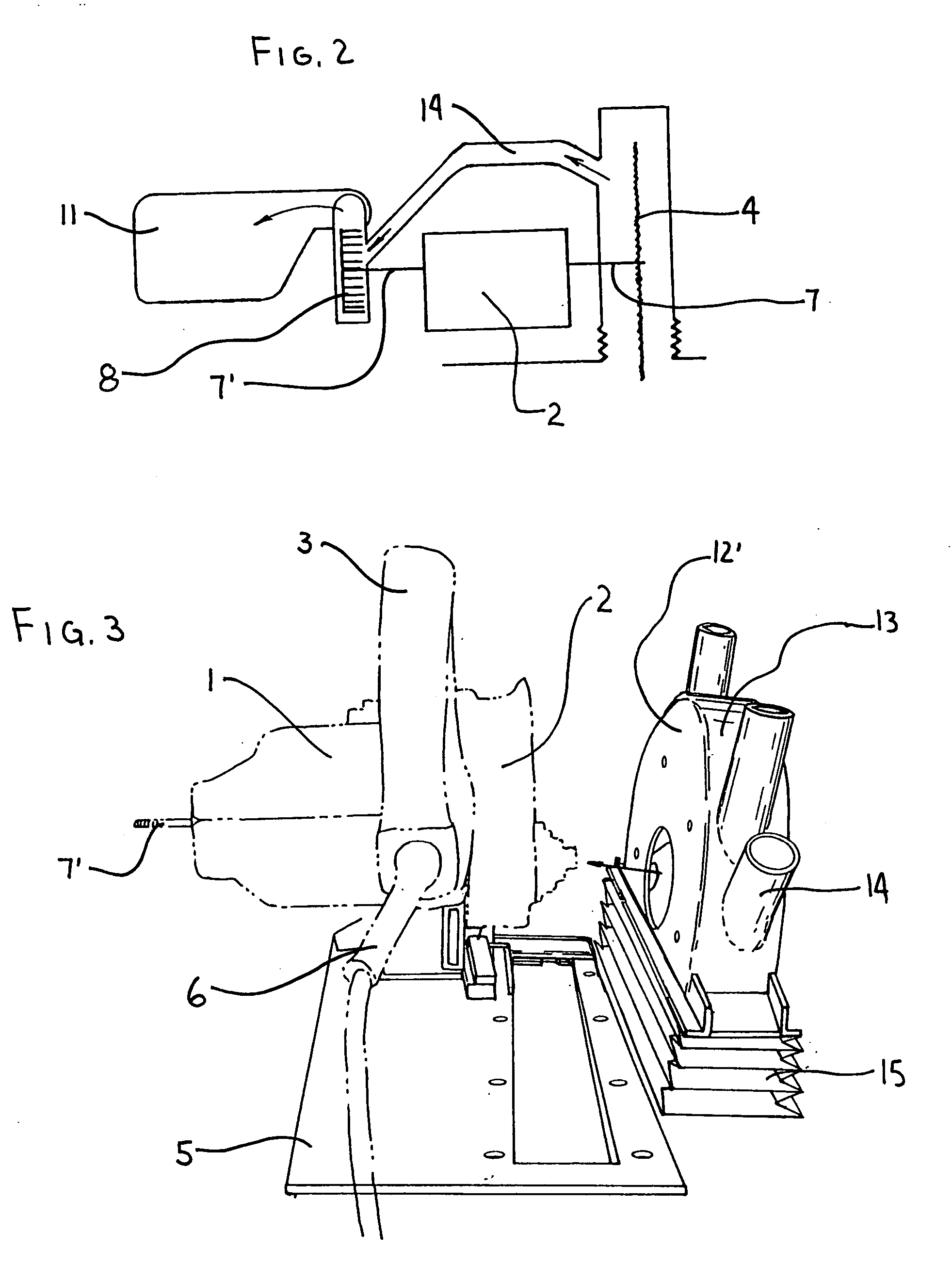Self-contained vacuum saw
a vacuum saw and self-contained technology, applied in the field of carpentry and sawing, can solve the problems of many problems, dust problems that pose a quandary for the workmen, and the accumulation of dust and debris
- Summary
- Abstract
- Description
- Claims
- Application Information
AI Technical Summary
Benefits of technology
Problems solved by technology
Method used
Image
Examples
Embodiment Construction
[0019] A self-contained vacuum saw, shown in its full embodiment in FIG. 1 is presented. The self-contained vacuum saw is a modification of the standard circular saws currently being used in the building and construction trades. Such a standard circular saw has a body 1 that contains an electric motor 2, a saw handle 3, a circular saw blade 4, and a lower saw platform 5. The lower saw platform 5 is pivotably connected to the saw body and has an inner side near the motor and an outer side outside the saw blade. The circular saw of the preferred embodiment has an electric motor and is powered through the saw cord 6. These well-known elements of the standard circular saw are best shown in FIGS. 1 through 3.
[0020] As shown schematically in FIG. 2, the electric motor 2 turns a blade drive shaft or armature 7 that in turn is connected to the saw blade 4. The electric motor in the instant device also turns a drive shaft vacuum extension 7′ (the same armature) which is connected to a vacuu...
PUM
| Property | Measurement | Unit |
|---|---|---|
| flexible | aaaaa | aaaaa |
| circumference | aaaaa | aaaaa |
| power | aaaaa | aaaaa |
Abstract
Description
Claims
Application Information
 Login to View More
Login to View More - R&D
- Intellectual Property
- Life Sciences
- Materials
- Tech Scout
- Unparalleled Data Quality
- Higher Quality Content
- 60% Fewer Hallucinations
Browse by: Latest US Patents, China's latest patents, Technical Efficacy Thesaurus, Application Domain, Technology Topic, Popular Technical Reports.
© 2025 PatSnap. All rights reserved.Legal|Privacy policy|Modern Slavery Act Transparency Statement|Sitemap|About US| Contact US: help@patsnap.com



